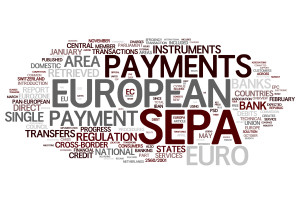
SEPA: Single Euro Payments Area / New procedures for bank transfers and direct debits in 2014
As of 1 August 2014, SEPA credit transfers and SEPA direct debits will permanently replace national payment processes for both domestic and cross-border euro payments (pan-European or international).
Objectives:
- To create a unique set of payment instruments in Euro, common to all European countries
- Anyone can make and receive payments in euro and benefit from the same fast, reliable and cost effective conditions, with the same rights and obligations, wherever they may be, i.e. make international payments within the SEPA zone in the same way as any domestic transaction in France
- Strengthen consumer protection
The SEPA zone comprises,
- 27 member states of the European Union
- The four European Free Trade Association member states: Iceland, Liechtenstein, Norway and Switzerland
- Monaco
Terms
- National credit transfer become SEPA credit transfer ->SCT
- National direct debit become SEPA direct debit ->SDD
The implementation of SDD improves customer protection thanks to clearer information and traceability of operations:
- Notification of the financial transaction will appear on the client’s bank statement
- Better banking rights (time frame for querying payments has been extended and the process made easier)
Focus on “SEPA Direct Debit Mandate” which replaces direct debit authorisations
- A legally recognised document: a creditor must be able to produce at all times the mandate showing the debtor has agreed to this method of payment
- A key document for direct debits: includes all the new data required to authorise the debiting of a client’s account.
Result:
- The creditor is now responsible for the mandate
- Storing the original mandate (Digitalisation/ Evidence in the event of a dispute)
- The bank will automatically refund the client up to 8 weeks following the disputed transaction.
- Thereafter the payer’s entitlement to a refund is extended to 13 months in the event of an unauthorised direct debit collection.
Related terms to the new “Mandate” document
SEPA Creditor Identifier: a unique code that identifies each creditor with a valid mandate. It replaces the OIN (originators identification number) which figured on direct debit authorisations) and is made up of 13 characters.
Mandate ID: 35 alphanumeric characters identify each signed mandate

